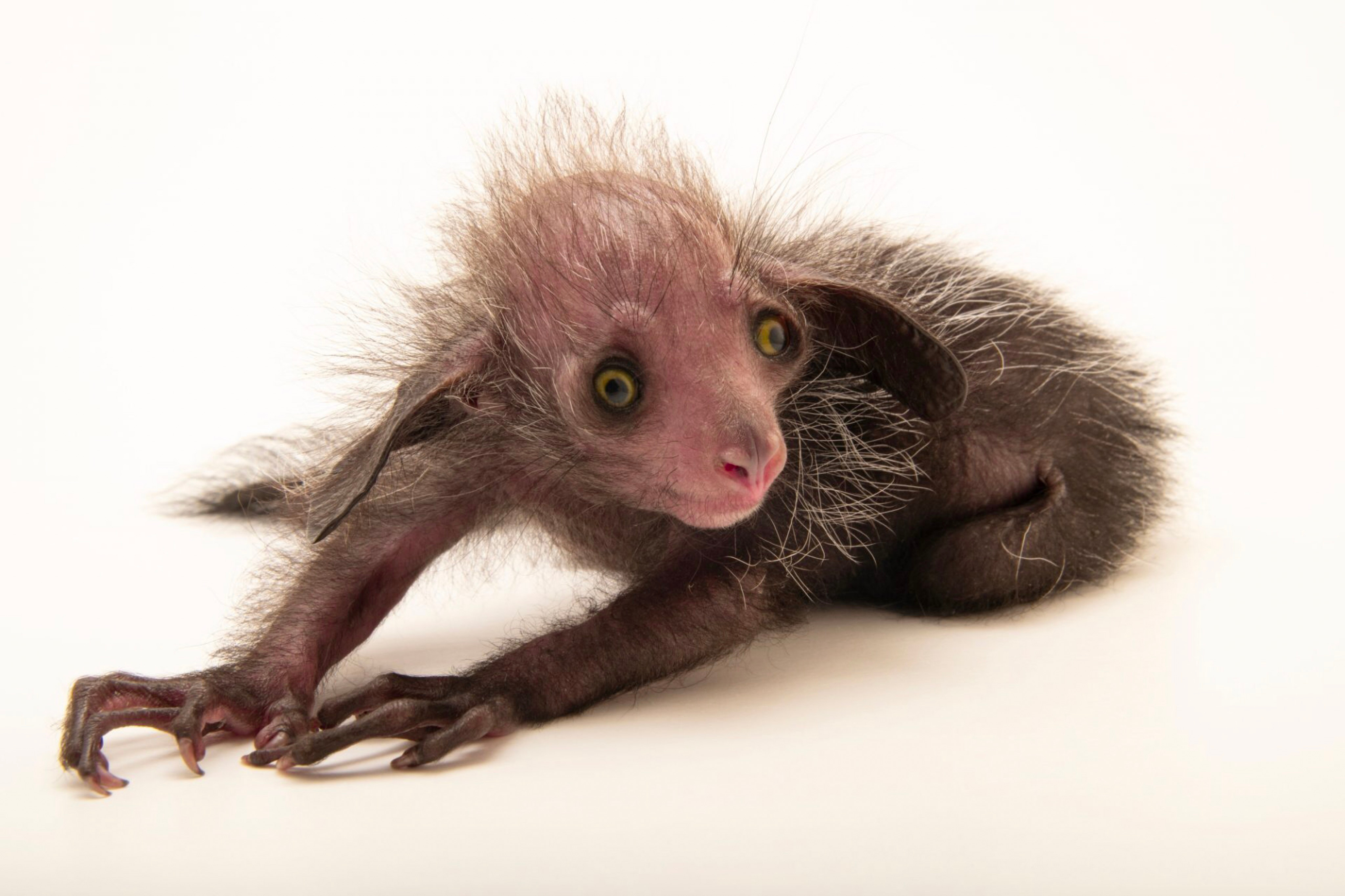Aye-ayes (Daubentonia madagascariensis) are the largest nocturnal primate in the world and almost undoubtedly the most distinct of all lemurs. Feared and revered in equal parts, this goblin-like native of Madagascar is a beautiful example of how evolution can drive the creation of some wonderfully weird creatures.
With straggly hair and beaming eyes, photographs of aye-ayes can often make them look like a wired celebrity who’s just been snapped by the paparazzi while leaving a nightclub at 4 am. That’s because they are only spotted at night, and any photograph of them in the wild amid the dense forest requires a powerful flash.
That said, it’s fair to say they are very unusual-looking creatures at the best of times. They’re typically just 60 centimeters (2 feet) long, not including their tail, and are covered in a bush of dark hair that becomes tipped with white on their head and back.
Their relatively bare face looks more like a rodent or an opossum than a primate. They also feature large and bulging eyes, specially adapted for night vision, as well as bat-like ears that contribute to their sharp sense of hearing.

A 16-day-old baby aye-aye.
Image credit: Animal Search/Shutterstock.com
Their spindly fingers are particularly unique. Their middle finger is exceptionally long and thin, which allows the primate to “fish out” grubs and insects from trees. They are known to use their freakishly long fingers to pick their nose, although no one is certain why they do this (the same can be said for humans and many other primates too). Stranger still, researchers recently discovered that the aye-aye has evolved a sixth digit to aid in gripping and climbing trees.
The species is found only on the island of Madagascar off the east coast of Africa. The island split from the Indian subcontinent around 88 million years ago, allowing native plants and animals to evolve in relative isolation, much like the situation in Australasia and its peculiar animals.
Since there are no woodpeckers on the island, aye-ayes fill their ecological niche of poking around tree trunks to forage for bugs. Chimpanzees exhibit a similar behavior where they use twigs to poke around mounds to catch termites, but the aye-aye evolved its stick-like fingers purely for this purpose (and, obviously, nose-picking).
Aye-ayes are the only member of the genus Daubentonia alive on Earth today, although there was once a second member known as the giant aye-aye (Daubentonia robusta) that was around 2.5 to 5 times larger. It’s assumed this species fell into extinction around 1,000 years ago.
Sadly, the living aye-aye species isn’t in great shape either. The species is so rare that people assumed they had fallen into extinction in the early 20th century, but decades later it was found there was still a viable population. That’s perhaps not too surprising, since they are nocturnal and very shy around humans.
While their population numbers may still be higher than currently appreciated, the IUCN Red List classifies them as an endangered species facing an uncertain future due to rampant habitat destruction in their native homeland.
They also fall victim to more direct threats from humans. Regional folklore in Madagascar associates the animal with misfortune and evil. If an aye-aye is spotted in the dead of night, it’s said to be a sign that something evil is brewing. Worst still, if an aye-aye points at you with your middle finger, some believe you are marked for death. This negative image means that aye-aye is often actively hunted down. Who can blame them for being a little bashful?
Source Link: Aye-Ayes Are One Of Madagascar's Strangest Lifeforms